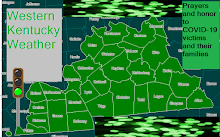Flash Flood Warning- Issued to inform the public, emergency management, and other cooperating agencies that flash flooding is in progress, imminent, or highly likely.
Flash Flood Watch-Issued to indicate current or developing hydrologic conditions that are favorable for flash flooding in and close to the watch area, but the occurrence is neither certain or imminent
Flood Stage-
An established gage height for a given location above which a rise in water surface level begins to create a hazard to lives, property, or commerce. The issuance of flood (or in some cases flash flood) warnings is linked to flood stage. Not necessarily the same as bankfull stage.
Flood Statement (FLS)-
In hydrologic terms, a statement issued by the NWS to inform the public of flooding along major streams in which there is not a serious threat to life or property. It may also follow a flood warning to give later information.
Flood Warning-(FLW) In hydrologic terms, a release by the NWS to inform the public of flooding along larger streams in which there is a serious threat to life or property. A flood warning will usually contain river stage (level) forecasts.
Flood Watch- Issued to inform the public and cooperating agencies that current and developing hydrometeorological conditions are such that there is a threat of flooding, but the occurrence is neither certain nor imminent.
Flood-Any high flow, overflow, or inundation by water which causes or threatens damage.
Flood Categories-Terms defined for each forecast point which describe or categorize the severity of flood impacts in the corresponding river/stream reach. Each flood category is bounded by an upper and lower stage (see Example 1). The severity of flooding at a given stage is not necessarily the same at all locations along a river reach due to varying channel/bank characteristics or presence of levees on portions of the reach. Therefore, the upper and lower stages for a given flood category are usually associated with water levels corresponding to the most significant flood impacts somewhere in the reach. The flood categories used in the NWS are: *Minor Flooding* - minimal or no property damage, but possibly some public threat. *Moderate Flooding* - some inundation of structures and roads near stream. Some evacuations of people and/or transfer of property to higher elevations. *Major Flooding* - extensive inundation of structures and roads. Significant evacuations of people and/or transfer of property to higher elevations. *Record Flooding* - flooding which equals or exceeds the highest stage or discharge at a given site during the period of record keeping. Note: all three of the lower flood categories (minor, moderate, major) do not necessarily exist for a given forecast point. For example, at the level where a river reaches flood stage, it may be considered moderate flooding. However, at least one of these three flood categories must start at flood stage.
Flood Control Storage- In hydrologic terms, storage of water in reservoirs to abate flood damage
Flood Crest-
Maximum height of a flood wave as it passes a certain location
River Flood Statement- This product is used by the local National Weather Service Forecast Office (NWFO) to update and expand the information in the River Flood Warning. This statement may be used in lieu of a warning if flooding is forecasted, imminent, or existing and it presents no threat to life or property. The statement will also be used to terminate a River Flood Warning.
River Flood Warning-
This is product is issued by the local National Weather Service Forecast Office (NWFO) when forecast points (those that have formal gaging sites and established flood stages) at specific communities or areas along rivers where flooding has been forecasted, is imminent, or is in progress.
Flooding is defined as the inundation of normally dry areas as a result of increased water levels in an established water course. The flood warning is based on the RVF product from the River Forecast Center (RFC) in Minneapolis, Minnesota. The flood warning normally specifies crest information. It usually occurs 6 hours or later after the causative event and it is usually associated with widespread heavy rain and/or snow melt or ice jams. It will contain the forecast point covered by the warning, the current stage (if it is available), and the established flood stage. It will also contain the forecasted crest from the River Forecast Center (RFC) in Minneapolis, Minnesota. From this forecasted crest, the NWFO will be able to determine which areas will be affected by the river flooding. This information will be included in the warning. Finally, the statement will include a site/event specific call to action.
River Flooding-The rise of a river to an elevation such that the river overflows its natural banks causing or threatening damage.
River Forecast-
An internal product issued by RFCs to other NWS offices. An RVF contains stage and/ or flow forecasts for specific locations based on existing, and forecasted hydrometeorologic conditions. The contents of these products are used by the HSA office to prepare Flood Warnings (FLW), Flood Statements (FLS), River Statements (RVS), as well as other products available to the public
Tuesday, March 18, 2008
Subscribe to:
Post Comments (Atom)






No comments:
Post a Comment